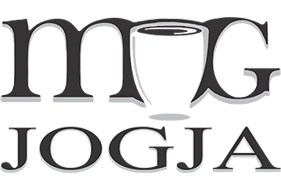In order to facilitate the creation and use of minutes, it is good that they follow the agenda. For each agenda item, there should be a corresponding item in the minutes. In this way, reports and supporting documents can be attached to the agenda and kept as part of the agenda. Someone who checks the minutes later can then easily refer to the agenda and appendices. It is also not necessary to register the applicant or the second in an application or who voted for and against a motion. However, each member has the right to have his or her dissenting vote recorded. Therefore, if a Member requests that his negative vote be recorded in the Minutes, this should be noted. Meeting minutes are important legal documents. They serve as a record of the decisions of the board of directors and/or shareholders – on which banks, auditors and regulators can rely. The signed protocols are an important piece of evidence for the resolutions to which they relate. Write a note indicating that a quorum has been reached. Whether you are taking notes for a board meeting or a ministerial meeting, indicate if there is a sufficient number of participants present to formalize the meeting.
This number is derived from the articles of association or guidelines of the company. For many things in life and business, less is more. In the world of associations, this applies in particular to the minutes of meetings. If the protocol does not contain the signatures/seals of the participants, it is clear that they do not meet the extrinsic requirement of a contract and therefore cannot be considered as such in the context of civil law. As a result, no civil rights and obligations relationship has been established between the parties. The Intermediate People`s Court of Yueyang Municipality, Hunan Province, issued its final verdict based on this view in the case of Tianzou Breeding v. Tianzou Jingyuan Husbandry (2019). Minutes are a kind of highly summarized and simplified document that is signed by all participants to record the basic agenda, topics discussed and decisions taken at meetings or conferences.
Common examples are minutes of shareholder and board meetings. There are many cases where the parties intended to establish a contract in the form of protocols, only to reject them as valid contracts or agreements. There were also situations where minutes were only used to record the content of a meeting, but were later recognized as contracts that had to be performed. It is therefore urgent to establish the nature of the minutes of civil and commercial meetings and the criteria for determining their legal force. The official actions of the participants in the meeting (applications submitted and approved or rejected). It is common and good practice that only the resolution finally adopted is recorded in the minutes. The content of the board minutes has played an important role in a number of high-profile court decisions, including ASIC`s lawsuit of the directors of James Hardie Industries Ltd and Centro Properties Ltd. Since debates rarely reflect a balanced opinion or consensus among members – the minority or majority view is more strongly represented – the inclusion of debates in the minutes could lead to a distorted history. In addition, the inclusion of debate details could lead to a public appearance of division if a unified public front is more desirable.
Write or enter a header that specifies the topic of the meeting. For example, you could write “Meeting to discuss the new product strategy.” Specify the date and time. Indicate the location, such as “Third Floor Conference Room” or “Offices of Lawyer James Smith, Esq.” Enter the address. Indicate the names of those physically present and those participating electronically by teleconference or videoconference. Creating a contract requires authentic signatures and/or seals from all parties. Article 490 of the Civil Code provides: “If the parties conclude a contract in the form of a written agreement, the contract is concluded at the time when the parties sign, stamp or affix the memorandum.” The prerequisite for protocols to become legally binding is that they be signed or sealed by the participants in confirmation. Despite the flexibility available to organizations to create their “minutes of events,” the following proposal in Robert`s Bylaws is worth considering: “In regular social meetings and meetings of boards of directors and trustees, there is no point in reporting on debates; The task of the author in such cases is mainly to record what is “done” by the assembly, not what is said by the members. The minutes are not a detailed report of your board of directors or committee meeting. Here`s what you should include and what you should omit. Write “Postponed meeting” and specify the time the meeting ended.
Indicate the remaining transactions that were not discussed. Do not write down conversations that take place after the adjournment, as they are not officially part of the meeting. The minutes of the meeting must contain at least the time, date and place of the meeting, the fact that the meeting was announced in advance, the names of those present, the presence of a quorum and the official actions of the participants in the meeting. Beyond these basic elements, there is some leeway as to what additional documents should be included in the protocol to meet the needs of a particular association, meeting or topic being discussed.
